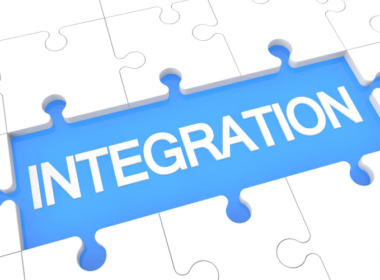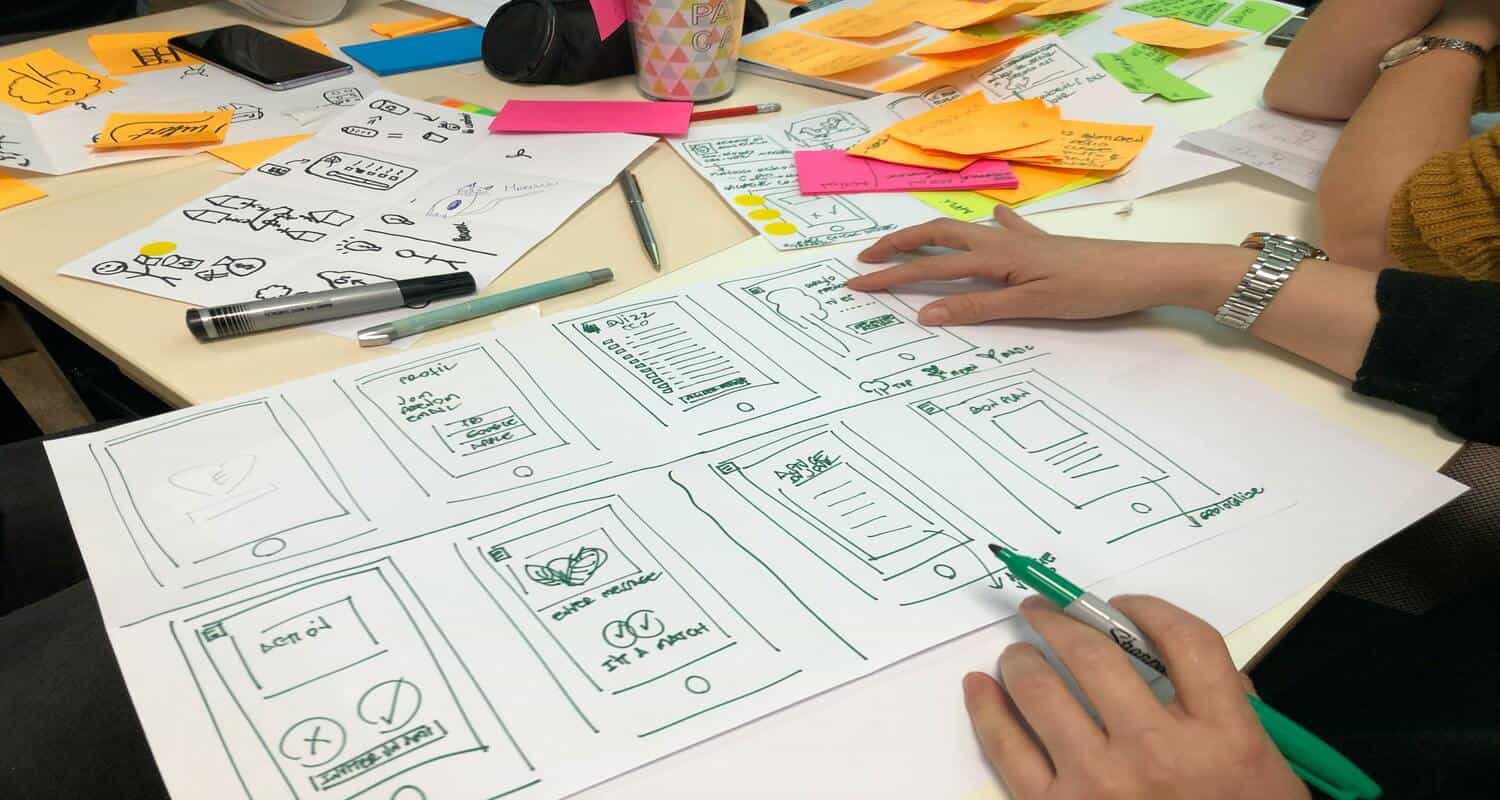Would you be excited to build products that no one uses? Products that wind up as failures? Of course, you won’t but people do.
90% of startups fail in the USA.
The product mortality rate is no different in FMCG or Healthcare either. Across industries, 75-95% of products fail—disheartening truth.
Why do startups & their products fail?
Can you guess the #1 reason behind dying products? No market need.
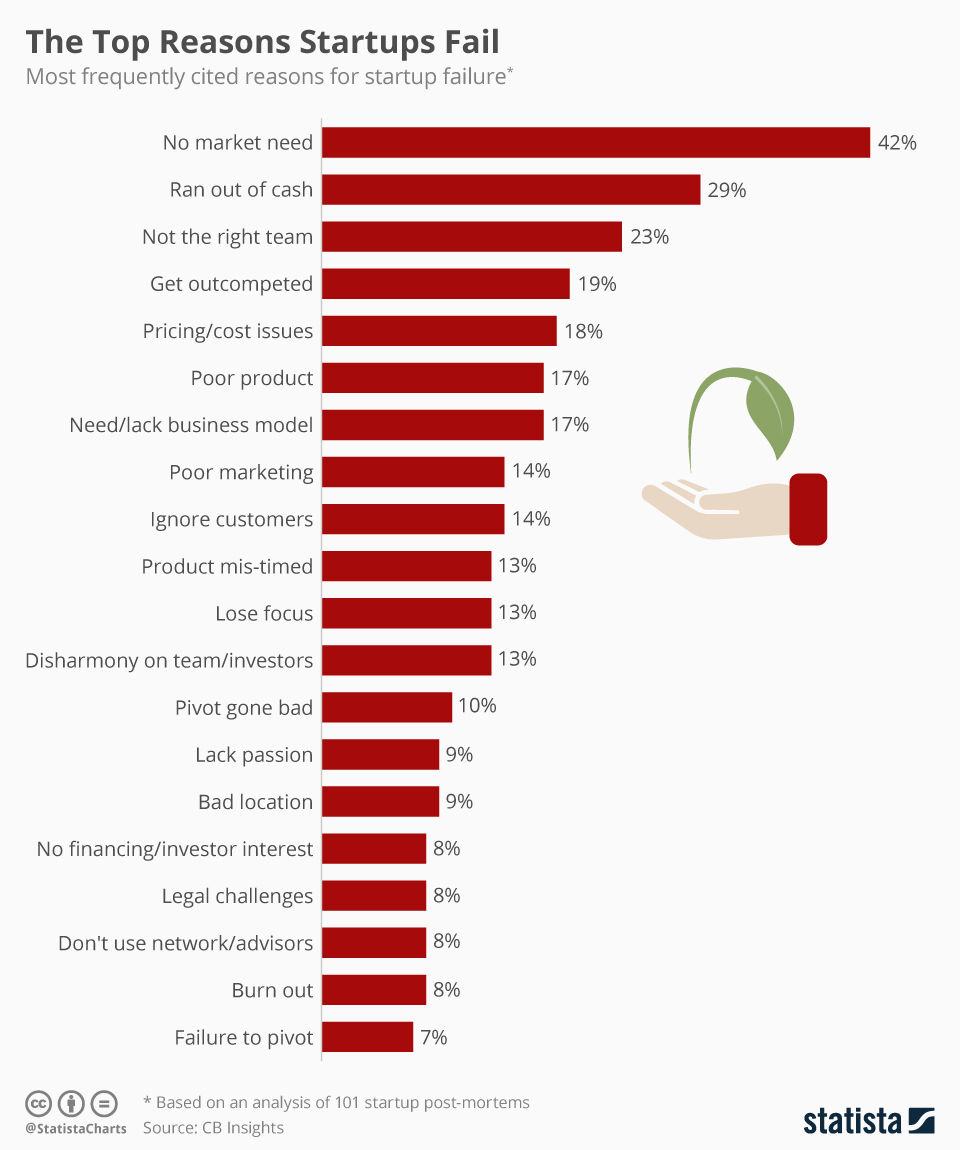
You read that right, poor product-market fit is highly fatal. Design thinking does come in handy to tackle product-market fit but there are other reasons too behind the startling high mortality rate of startups.
Ignoring customers, poor product quality, mistimed products, no pivot or unnecessary pivot, and poor business models are equally suicidal for startups.
Many noobie entrepreneurs think ‘tech’ is a big reason behind failure.
Nope.
Abhijith often says, “tech is an enabler“. But people use it as an excuse for failure. And that’s true. Only 7-8% of startups fail due to inefficient tech.
How to avoid building dying products?
Validate the product-market fit.
To nail the product-market fit, entrepreneurs need to step out of the echo chamber that they may have created around themselves, and especially the echo chamber in their heads. You gotta be out there and listen to the pains of your customer. Shape your product around that pain, and solve it.
Steve Jobs of the world may smirk, but you can’t really ignore customers & launch new products. Some people do have a knack for innovating products that actually click and spread like a wildfire. But most of the time users themselves don’t know what they want. You need to observe the hidden signs and figure out their pains.
Objective – the guiding force
We have seen people burning cash on fancy features and creating market buzz, but down the line, they run out of cash, and then they crash. Not so a sustainable strategy. First, see the product in its entirety as something that solves the core problem and then as a combination of features that simplifies the objective fulfillment process. Lastly, the features should also make problem-solving a joyful experience.
How do you launch a product that sails, and succeeds?
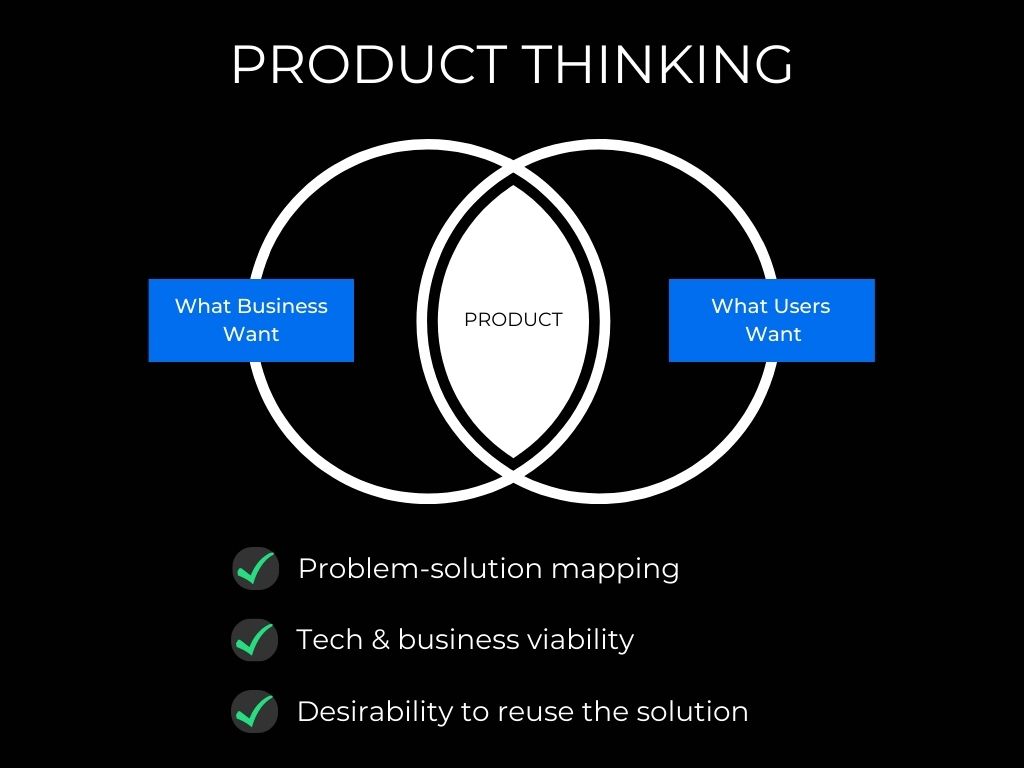
Product thinking.
What is Product thinking?
Product thinking is an umbrella term for all the cognitive processes and design methodologies that a team uses to make a product
- highly usable,
- unbelievably valuable, and
- ridiculously successful.
Do your users have rash skin that they want to scratch badly? The scrubber is not your product 😀 But a lotion that soothes & salves their itching urges could be the solution. Product thinking is building the right solution. A ridiculously successful product is what makes solving the objective super simple & fun.
Product thinking process
Let’s navigate the product thinking process with the help of the 5W1H model.
WHY?
The first step in product thinking is to identify the user’s problems. Prioritize problems, and find an optimal way to solve the identified problem(s). This is your WHY.
WHAT?
In product thinking, we view the product as a whole, without being obsessed with features. That doesn’t mean product thinking is a feature-agnostic process. Features are important. They are the means to achieve the goal.
But to find the right list of WHAT goes into the product, you primarily need to be obsessed with the problem you are solving, and then consciously envision the holistic nature of the product while constantly reminding yourself of the “Why?”.
As a product thinker, your intent is to provide real value and delight customers by delivering meaningful solutions.
There is a saying “Product thinking is a mindset, Think about the product, not about the features.”
In the end, it is not the design or the functions that make or break a great user experience. It is the product’s ability to solve a problem.
WHO?
The 5W1H model has no specific order in general, it’s an iterative cyclic process. But to better understand the problem asks questions like-
Who faces the problem?
Why do they face the problem?
When do they face the problem?
What is the nature of the problem for different user personas?
Where exactly the problem is triggered?
Answering these questions helps you shape the product in a more effective way. This also helps the UI/UX designers in wireframing the solutions, and in accepting/rejecting feature requests from users.
For example, some people tend to bite their nails with their teeth. A user may request dentures with blades. Lol. You never know. But if you really understand the problem that a user is trying to solve, maybe you could suggest a nail clipper for a better CX.
HOW?
One common misconception is that product thinking is all about problem-solving for the users. Nope. It goes beyond problem-solving. As displayed in the Venn diagram, product thinking is finding that common ground where users, business, and tech co-exists. Product thinking is ensuring that the problem is being solved, there is a viable business model, and the customer has desirability to reuse the solution.
Some client seeks perfection in the first build with maximum features but in reality, it doesn’t work like that. Once your product is in the market, listen to your customer’s feedback and iteratively improve the product and enhance existing features or add new ones if required.
Isn’t product thinking & design thinking the same?
Nope. Yes, there are a few overlapping elements in both processes but fundamentally Design Thinking is something product thinkers use to discharge their responsibilities.
We have covered design thinking in detail in our insights. In addition to the outcomes of design thinking, product thinking is also involved with –
- Devising mechanisms to optimize the customer’s lifetime value
- Enabling businesses to flexibly price their products
- Gain competitive advantage
- Drive product-led growth
- Build monopoly with product
Before diving into the design phase we need to visualize the product backed by the data, and all the aforementioned points, so that we have clarity on what we are buildings and why?
Once the goals are clear we can design/develop the features with simple UI/UX such that even if a casual user uses your product, s/he is able to navigate without much difficulty and understand its core functionality. That’s when your product is more likely to be successful.
Conclusion
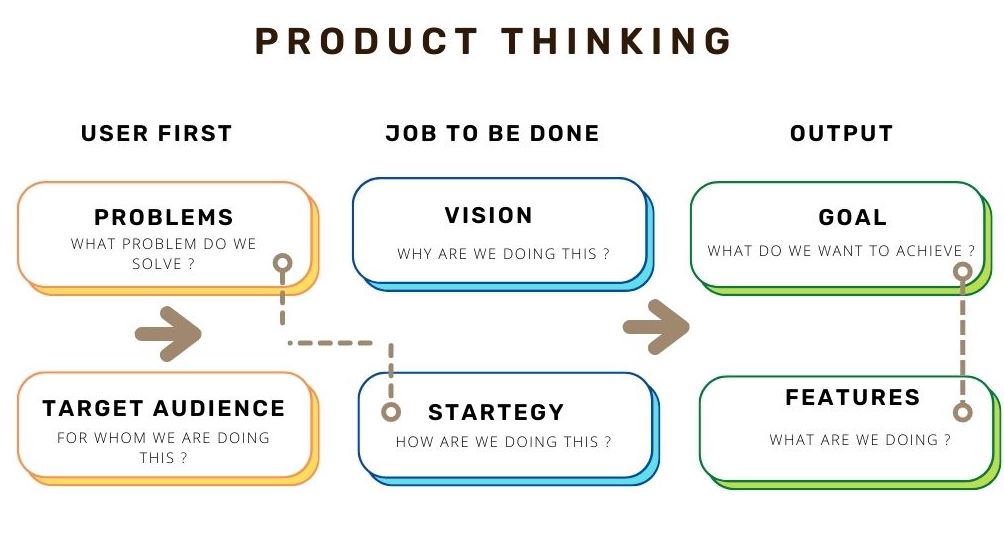
A product’s user experience is one of its USPs. But its core existence is for a purpose that fulfills a need or solves a problem that people have. Solving the problem becomes meaningful and provides value to the users. If the problem is non-existent, or the solution doesn’t fit the problem, the product becomes meaningless and people won’t use the product; which in turn leads to the downfall of the product. Wrong solutions can be fixed but solving a non-existent problem…IDK.
Key questions that help in effective product thinking.
What is the problem?
Why solve this problem?
What are the competitive advantages/disadvantages of our product?
What is the USP of our product?
How will it be implemented?
“It’s easy to develop complex products but it’s difficult to develop simple products.”
Takeaways:
- First try to understand the problem/needs in the market and come up with solution.
- Prefer simple and delightful user experience over-complicated and frustrating UI
- Make continuous improvement based on the feedback received by customers over seeking perfection on the first attempt.



